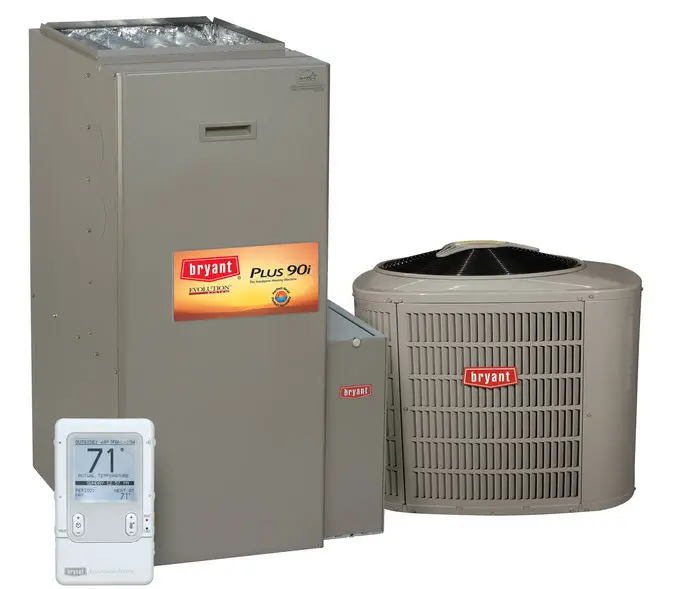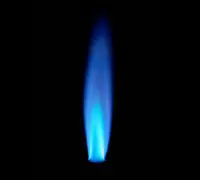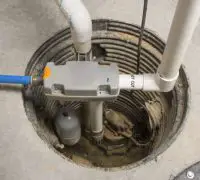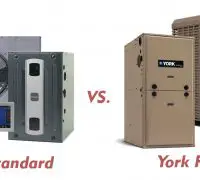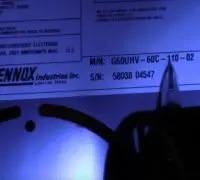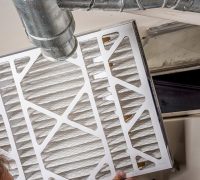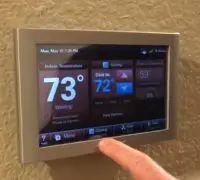Bryant Evolution Plus 90i furnace is a two-stage and 4-way multi-pose model with an adjustable speed blower motor. It’s Energy Rated with AFUE up to 96.6& and presents home comfort features for effortless operation. It runs on low stage heating up to 90% of the time for best efficiency, whereas the secondary heat exchanger improves heat transfer. The design is CSA certified, and the furnace runs quietly.
Bryant Evolution Plus 90i furnaces come with a lifetime limited warranty for the heat exchangers and a 5-year limited warranty for all components. You may extend the contract if interested. The Evolution Plus 90i comes in various models, ranging from 92.7% to 96.6% AFUE and multiple capacities.
The high-efficiency models (AFUE over 96%) come with incredible features such as Perfect Heattm and Perfect Humiditytm, and Evolution Control. The Perfect Humidity feature improves the comfort with up to 30 times the humidity control throughout the cooling functioning of regular comfort systems. The Bryant’s Fan On Plus allows you to select one of the three continuous fan speeds at the thermostat.
Intelligent electronics identify the most practical combination of comfort and energy-saving operation. The system monitors ensure text-based messaged on the LED screen (large) so you know when it’s time for routine maintenance, filter replacement, and such. Some models come with remote connectivity so you can control, adjust, and check the system no matter where you are via the phone, cell phone, as long as you have Internet.
Page Table of Contents
- How should you troubleshoot your furnace?
- 11 no previous code
- 12 Blower on after power-up (115 VAC or 24 VAC)
- 13 Limit circuit lockout
- 14 Ignition lockout
- 14 Blower motor lockout
- 21 Gas Heating lockout
- 22 Abnormal flame-proving signal
- 24 secondary voltage fuse is open
- 25 Model selection or setup error
- 31 High heat pressure switch/relay didn’t reopen or didn’t close
- 32 Low heat pressure switch reopened or didn’t close
- 33 Limit circuit fault
- 34 Ignition proving a failure
- 41 Blower motor fault
- 42 Inducer motor fault
- 43 Low heat pressure switch open, as the high heat pressure switch remains closed
- 45 Control circuitry lockout
How should you troubleshoot your furnace?
Keep in mind that your knowledge and experience with furnaces count very much when troubleshooting a furnace. The adjustable speed furnace control comes with diagnostic abilities built-in. The Amber LED is utilized for flashing a status code, which will guide you to further investigations (check the user manual of the model you own).
If the status code recall is required, you should disconnect the R thermostat lead, reset power, and place the setup switch SW1-1 in the On position. You will be able to eliminate the status code history by placing the setup switch SW1-1 in the On position, and jumper thermostat terminals, R, W/W1, and Y/Y2 at the same time, until you notice the status code no.11 being flashed.
Should the LED code status be continuously Off, you must examine the 115 VAC at L1 and L2 and 24VAC at Sec-1 and SEC-2. If it’s continually On, control utilizes 24VAC power. When it’s rapid flashing, the line voltage (115VAC) polarity was reversed, most likely by accident.
The next status codes comprise two-digit numbers with the first digit created by the number of short flashes, whereas the number of long flashes gives the second digit.
11 no previous code
Stored status codes are deleted automatically after 72 hours.
12 Blower on after power-up (115 VAC or 24 VAC)
The blower will operate for 90 seconds when the furnace is powered up throughout the request for heat (RW/RW1 closed) or (R-W/W1) throughout the blower on-delay period
13 Limit circuit lockout
The lockout will develop when the limit or the flame rollout switch remains open for more than 3 minutes. The lockout will also occur when there were ten continuous attempts throughout high-heat. It will take three hours for control to reset automatically. You should check status code no.33 for further investigation.
14 Ignition lockout
Should that happen, the control will reset automatically after 3 hours. Check the status code no.34 for more details.
14 Blower motor lockout
It shows that the blower didn’t manage to go to 250 RPM or that the blower couldn’t communicate in the first 30 seconds after being turned on in two repetitive heating styles. The control will restart automatically after 3 hours. Examine status code no.41 for more information.
21 Gas Heating lockout
This time, control isn’t going to reset automatically, so you should examine if the gas valve isn’t mis-wired. The control could be defective, causing valve relay.
22 Abnormal flame-proving signal
Even if the gas valve is de-energized, the flame is still proved. The inducer will operate until the fault is addressed. You should examine if the gas valve is leaking; the gas valve could also be stuck open.
24 secondary voltage fuse is open
Investigate if the secondary voltage (24VAC) wiring doesn’t present a short circuit.
25 Model selection or setup error
The error code shows that the model plug (PL4) isn’t present or it’s not correct. Also, the setup switches SW1-1 or SW1-6 could be placed incorrectly. When the code flashes four times On, power-up control is set for the memory model selection. You need to see:
- Thermostat call with SW1-1 On.
- Thermostat call when SW1-6 is On
- Simultaneously SW1-1 and SW1-6 On
- Two various furnace models being connected
- When the code flashes without stopping, check the wiring diagram for model and resistance values.
- Board doesn’t identify the model. Furnace board date (code 4106)or later will be asked.
31 High heat pressure switch/relay didn’t reopen or didn’t close
The code shows that the high-heat pressure switch input didn’t close on the high heat request, or it opened throughout high-heat. The control relay could be faulty, or the gas valve isn’t wired correctly. Check the status code no.32 for further details.
32 Low heat pressure switch reopened or didn’t close
The code informs that the low heat pressure switch input didn’t close on the low-heat request, or it opened throughout the low-heat. When it opens throughout the blower on-delay sequence, the blower will run for the set blower off-delay.
When it opens in the first 5 minutes after ignition, the heating cycle will be limited to high heat.
You should check:
- Correct vent sizing
- Low inlet gas pressure (when the furnace runs on LGPS)
- Connected condensate drain
- Too much wind
- Incorrect pressure switch wiring
- Blocked combustion air supply
- Defective or out of calibration pressure switches
- Detached or blocked pressure tubing
- Water in vent piping, sagging pipes
33 Limit circuit fault
The code shows that the flame rollout or limit is open; it also informs that the furnace runs only in high heat mode because of two repetitive low heat limit trips. The blower will operate for four minutes or until the open switch will remake, whichever takes longer.
When open takes more than 3 minutes, the code will switch to lockout no.13. When open takes less than 3 minutes, the status code no.33 will keep on flashing until the blower turns off. The flame rollout switch demands a manual reset. You should examine:
- Correct rear air baffle
- Faulty switch or connections
- Loose blower wheel
- Incorrect low-heat gas input adjustment
- Incorrect/misaligned limit and/or limit shield
- The high heat solenoid in the gas valve is stuck
34 Ignition proving a failure
Control will attempt three times before lockout no.14 takes place. When the flame signal disappears throughout the blower on-delay phase, the blower will run for the set blower off-delay.
You will have to investigate:
- The gas valve is faulty or turned off
- The inlet gas pressure is low
- Continuity for the control ground
- Faulty hot surface igniter
- The flame sensor developed oxide build up. Get some fine steel wool for cleaning
- The manual valve could be shut off
- The flame micro amps should be correct (.5 microamps DC min, 4.0-6.0 nominal)
- The flame sensor shouldn’t be grounded
- The flame carryover should be adequate, and the ignition shouldn’t be rough
- The green/yellow wire MUST be attached to the furnace’s metal sheet
41 Blower motor fault
The code reveals that the blower didn’t manage to obtain 250RPM or that the blower could not inform within the set time limits. It should be ten seconds throughout steady-state functioning or thirty seconds after it’s switched on.
42 Inducer motor fault
The code informs that the inducer couldn’t start in the first 20 seconds after the request for heat. The inducer motor RPM could also be outside the proper ranger of operation or that the inducer RPM signal disappeared for 5 seconds throughout functioning. You will have to take a look at:
- Blocked combustion air supply
- Correct vent sizing
- Incorrect motor wiring
- Defective inducer motor
43 Low heat pressure switch open, as the high heat pressure switch remains closed
You will need to examine the following
- Connected condensate drain
- Low inlet gas pressure (when using LGPS)
- Incorrect wiring for the pressure switch
- The low-heat pressure switch is stuck open
- Sagging pipe, water in vent piping
- Blocked or detached pressure tubing
45 Control circuitry lockout
The reset will automatically occur after 1 hour if the cause is any of the following:
- The gas valve relay is stuck open
- There was a flame sense circuit failure
- Software check error took place. You will have to reset the power for clear lockout. Should the status code happen once again, you will need to replace control.
